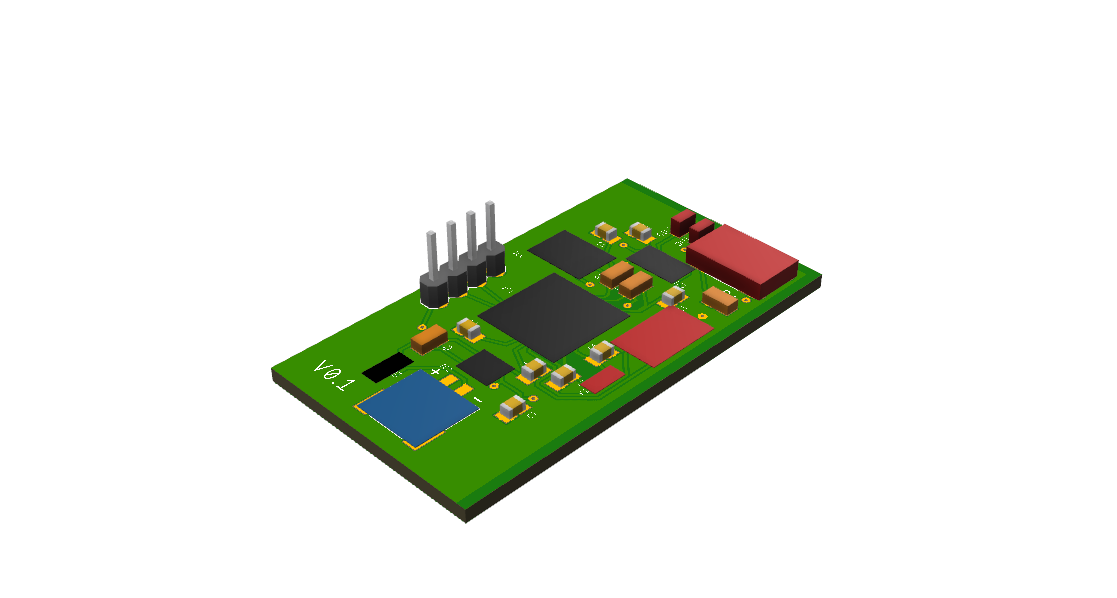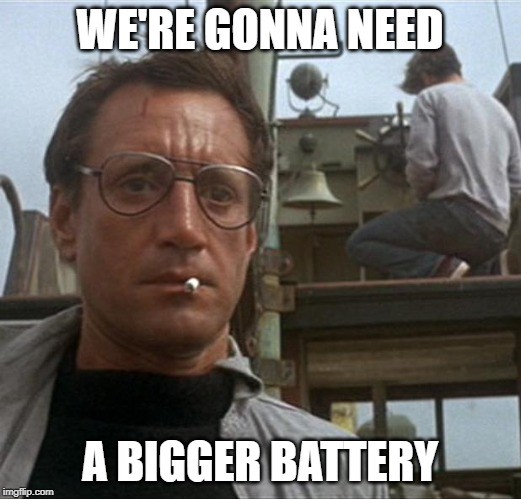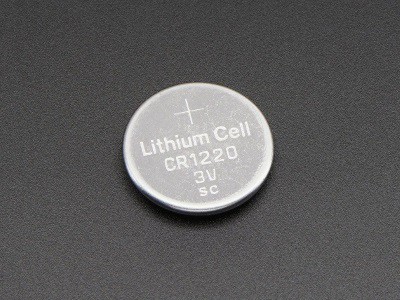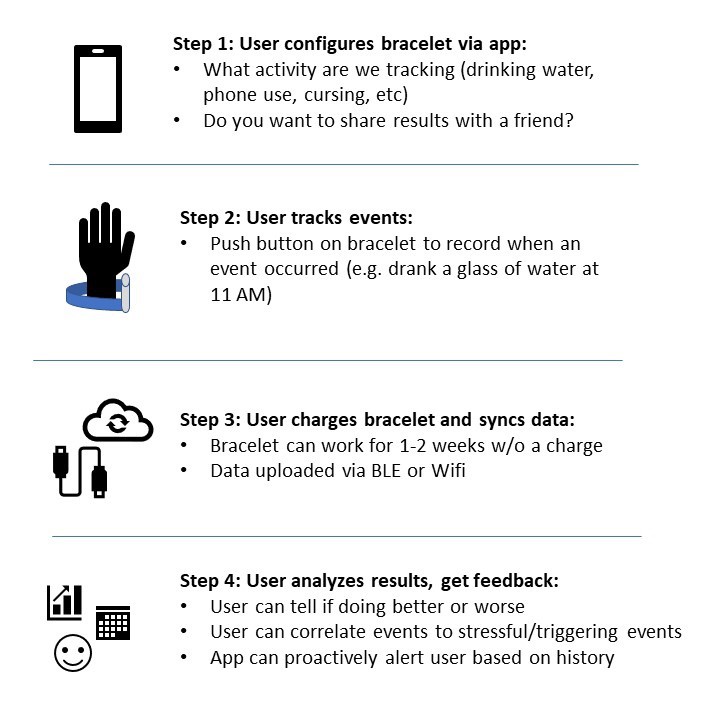-
Poor PCB Design Skills
05/19/2019 at 17:32 • 0 commentsI've dabbled in Eagle before... usually making slight tweaks to already existing designs. I'm designing the bracelet PCB from scratch. The first design was.... lacking.

I knew the first design would be large, but not so large that it wouldn't easily fit on a wrist. There are a few reasons for the size:
- I'm using larger SMT and Through Hole components, because I planned to solder everything by hand.
- I did a really poor job arranging the components on the board
- I have a number of large programming pins
I'm in the process of creating a second design - where I'm planning to reduce the size of the components and switch to SMT for most cases. I'm also going to revisit my programming headers.
I might start with one of the Adafruit Trinkets as a starting point... at least some of the components (Cortex M0, Caps, and Voltage Reg) are already laid out.
-
Rethinking Connectivity
04/21/2019 at 16:05 • 0 commentsMy goal was for the electronics portion of the bracelet to be small - like 10 x 20 mm.... unfortunately, the haptic motor requirements mean that I need a larger battery - making my design - best case - 15mm x 35mm.
Given that, I'm rethinking my stance on connectivity. I originally planned to build a second charging station that would also send data (via wifi or ble) to the cloud (where it could be analyzed and reported back to the user).
Since I need more space, I may include BLE functionality within the bracelet. This would make data sync easier (meaning my charging station would only need to handle charging).
Something like the nRF52840 (or the nRF52832) looks promising: small, a full SoC, has RTC functionality, and can operate between 1.7 and 5.5 V (which might mean removing the voltage regulator).
-
We're Gonna Need a Bigger Battery and a Voltage Logger
04/13/2019 at 03:58 • 0 comments
Last week, I tried a very simple proof of concept with a CR1220.
It worked for maybe 20 mins.
The battery just didn't have enough capacity to power the haptic motor for any length of time. So, I'm going back to the drawing board, and looking at larger LIPO battery (which means by bracelet may be larger than I initially wanted it to be).
Unfortunately, I don't have the tools to test my new design properly. Specifically, I want to track battery performance (current and voltage) over time. I can't seem to find an off-the-shelf tool to do that for me, so I'm building my voltage logger with some leftover Adafruit parts I have on hand.
Specifically, I'm using:
- ESP8266 Feather (note: I prefer the ESP32, but I have 6 ESP8266 feathers un-used in my toolbox)
- TFT Featherwing
- INA219 Featherwing (this I didn't have and had to buy - I'll use this to track the voltage, current, etc)
- a modified-version of a 3D printed feather case
- assorted connectors and clips to easily connect by projects.
I'll update this post later with a link to the voltage logger (I'll create it as a separate project, in case anyone else wants to leverage the code/design).
-
"Current" Challenge - will a LIR1220 Battery work?
04/08/2019 at 21:29 • 2 comments
I'd like to get 3-4 days of use from the wearable; my assumption is that the MCU will stay in a deep sleep mode, unless 'interrupted' by the RTC (alarm/reminder) or push button (record an event).
I'd also like to go with a small battery. A LIR2032 or LIR2035 coin cell would work - except that I believe both are two large in diameter for the bracelet (they are 20 and 23 mm). The LIR1220 is a better option size-wise (12 mm) - I just don't know if:
- It will allow enough current to drive the haptic motor
- it will recharge in an adequate amount of time
- It will last 3 days assuming 20 alerts/events a day
Next step is to put together a quick proof of concept to validate my assumptions.
[Note - I originally referenced the wrong version of the batteries (CRXXXX instead of LIRXXXX)]
-
What is this thing supposed to do?
04/05/2019 at 01:47 • 0 comments -
Why Am I Building This?
04/05/2019 at 01:10 • 0 comments
I've got a confession to make: I’ve got a bit of a potty mouth. I can make any curse word a verb, noun, adjective or adverb.
A few months ago, my co-workers and I were on a conference call with another department. Since we were all in the office together, we took the call from a conference room. Once we ended the call, I let lose a two-minute tirade of curses that would make a sailor blush.
After I stopped, I looked around the room and felt that I had lost the respect of my peers. My words –though not directed at the people in the room – were hurtful, disrespectful, and not in line with my, or my company’s, core values.
I decided then and there to make a change: I was going to stop cursing.
The first few weeks were hard. I couldn’t go two hours without a mf, gd, or some other colorful phrase. I wasn’t making any headway, so I decided to start tracking my progress. Was a getting better over time? Where their certain days, or times of the day, that were worse than others? Should I reward myself if I only cursed 5 times a week? Or should I punish myself if I cursed more than 10 time a day?
Tracking my bad habit was harder than I thought. I built an Alexa still to keep track, but that only worked when I was at home. I tried multiple apps on my phone, but they were cumbersome to use (“unlock the phone, find the app, open the app, log the event”). I even tried using a notebook – but that was a failure from the start.
What I wanted was something simple, small, and always on me.
That’s when I decided to build a small tracker dongle that could be put in bracelet, latched on key chain, or simply put in my pocket.
Be Better Bracelet
A simple, subtle wearable that can reinforce positive habits and track progress on stopping bad habits
 Darian Johnson
Darian Johnson



